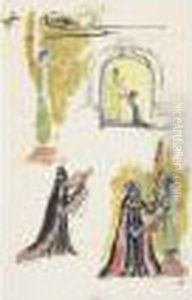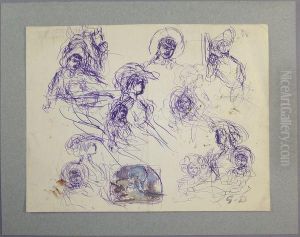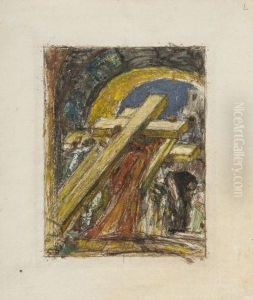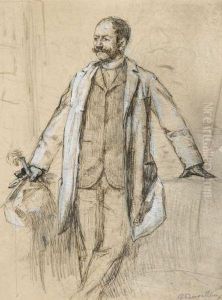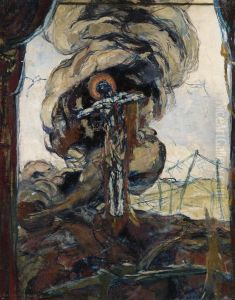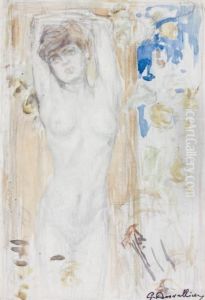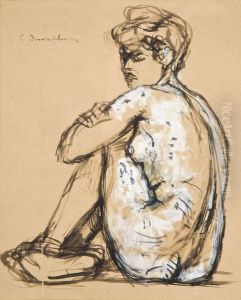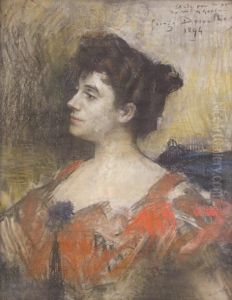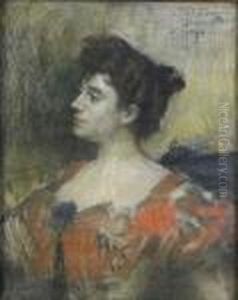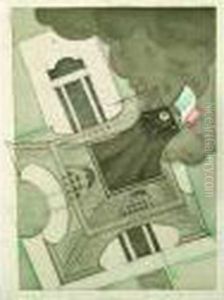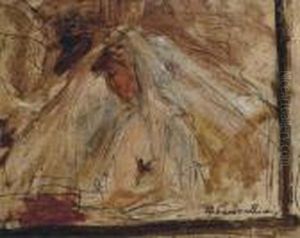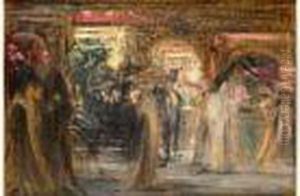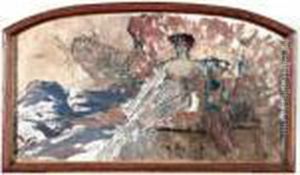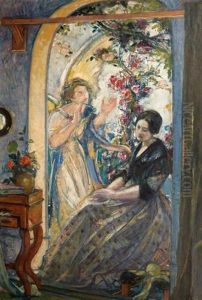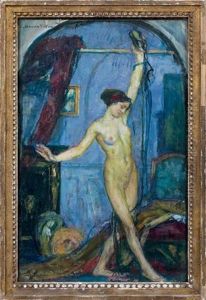Georges Desvallieres Paintings
Georges Desvallières was a prominent French painter and artist, born in Paris in 1861. He is known for his contributions to the Symbolist movement and for his role in reviving religious painting in France during the early 20th century. Desvallières studied under the guidance of several notable artists of his time, including Gustave Moreau, who had a significant influence on his style and thematic choices. Desvallières' work is characterized by a vibrant use of color, a deep sense of spirituality, and a dedication to depicting themes of war, religion, and human suffering with a profound intensity.
Throughout his career, Desvallières actively engaged with the artistic community, becoming a founding member of the Salon d'Automne in 1903, an annual art exhibition aimed at promoting innovative trends in art away from the conservatism of the official salons. His involvement with the Salon d'Automne placed him at the center of the avant-garde movement in Paris, alongside other notable artists of the time.
Desvallières' experiences during World War I deeply affected his work, leading him to focus more on religious themes. In 1919, he co-founded the Atelier d'Art Sacré (Workshop of Sacred Art) with the painter Maurice Denis, which aimed to revive religious art by connecting it with contemporary movements and styles. This period marked a significant shift in his work towards more spiritual and symbolic themes, often incorporating biblical and mythological subjects portrayed with a modern sensibility.
Despite his contributions to French art and the religious art revival, Georges Desvallières is not as widely recognized today as some of his contemporaries. Nevertheless, his work remains an important part of the history of French art, reflecting the tumultuous changes of the early 20th century and the search for meaning and solace through art.
Desvallières continued to paint and contribute to the French art scene until his death in Paris in 1950. His legacy is preserved in various museums and collections in France, where his work continues to be studied and appreciated for its depth, intensity, and unique blend of traditional and modern elements.
